This is so because the history of photography is intractably tied up with all of the many technological advances in optics, cameras, and the recording medium used to capture images.


Photography is a fantastic endeavor in which art coexists with technology. Any complete history of photography will also include a history of the camera timeline, too.
History of Photography
The history of photography timeline is a history of art and science together.
Many photography timelines start with the first known photograph by Nicéphore Niépce in 1827. But it actually goes much further back than that. It goes back to a time and technology before lenses, cameras, and even film.
Camera Obscura: 500 BCE - 1600 CE
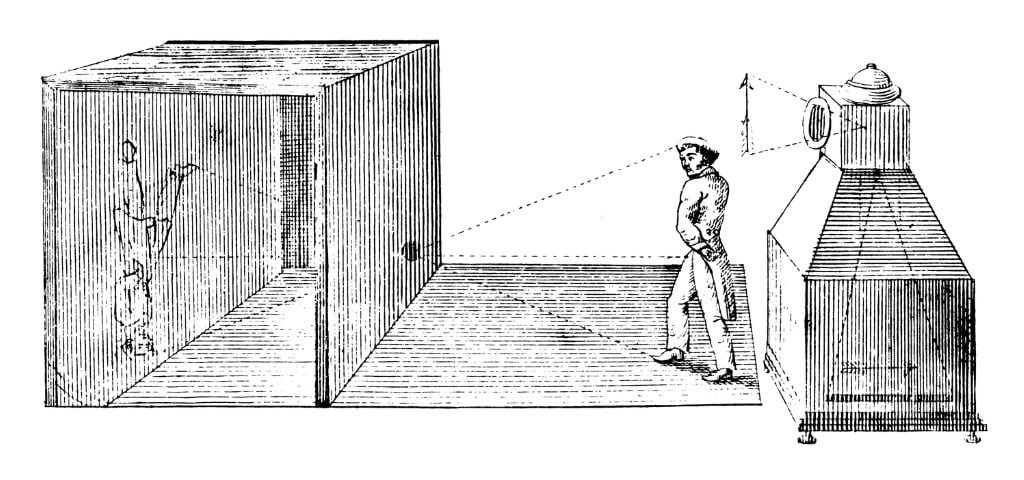
photo by nicoolay via iStock
The camera obscura was a tool used by some artists that allowed them to easily draw or paint realistic landscapes and rendering of architecture. In its simplest form, a pinhole projects a scene in a dark room or box that the artist can basically trace over.
Since the word photography is literally defined as drawing with light, we can look back at the concept of the camera obscura as a possible beginning for our timeline of photography. The earliest historical mention of the idea dates back to China in around 500 BCE.
Early Optics: 1400s - 1700s
Near the start of the 16th Century, the amazing artist, scientist, and inventor Leonardo da Vinci sketched out diagrams and wrote instructions about the camera obscura. In these papers, he included not just pinholes but also simple glass lenses.

Photo by Uriel Soberanes on Unsplash
Lenses and optics were a relatively new but established science by that time period, being used by astronomers to broaden our knowledge of the universe. Interestingly for our history of photography timeline, astronomers were also a driving force behind the advent of film.
Developing a Film Timeline: 1604 - 1827
Did you like that pun? Johannes Kepler, an astronomer and generally all around smart guy, gets credited with coining the term photograph for a drawing with light in 1604. He was referring to using telescopic optics to project an image onto a sheet of paper or a canvas to draw the stars.
Astronomers and inventors sought a way to make the paper or canvas itself sensitive to light. Glass or metal plates were also used in experiments by various people.
In 1717, Johann Heinrich Schulze showed that a solution of silver nitrate darkens when exposed to light. The problem now was how to stop the solution from continuing to darken to light, in other words, how to fix the image to the medium.
First Photograph: 1827
It was just one in a series of experiments, but View from the Window at Le Gras is the earliest surviving photograph. Nicéphore Niépce used a sheet of metal with a film of chemicals spread on it.

Nicéphore Niépce [Public domain]
Though light-sensitive, it wasn’t very sensitive. It took 8 hours to record the image. You can see sunlight illuminating both sides of the buildings. From here on, the timeline of photography moves rapidly.
Different metal plate technologies began to be used by astronomers, other scientists, and a new breed of artist/scientists, the naturists. The naturists were quite often scientists and inventors themselves, using this new technology to record the beauty of the world around them.
Daguerreotype: 1839
Around this time, the word photography began to be used to describe this new industry. From 1839 on, the popular metal plate process known as daguerreotype opened up this mix of art and technology to the masses.
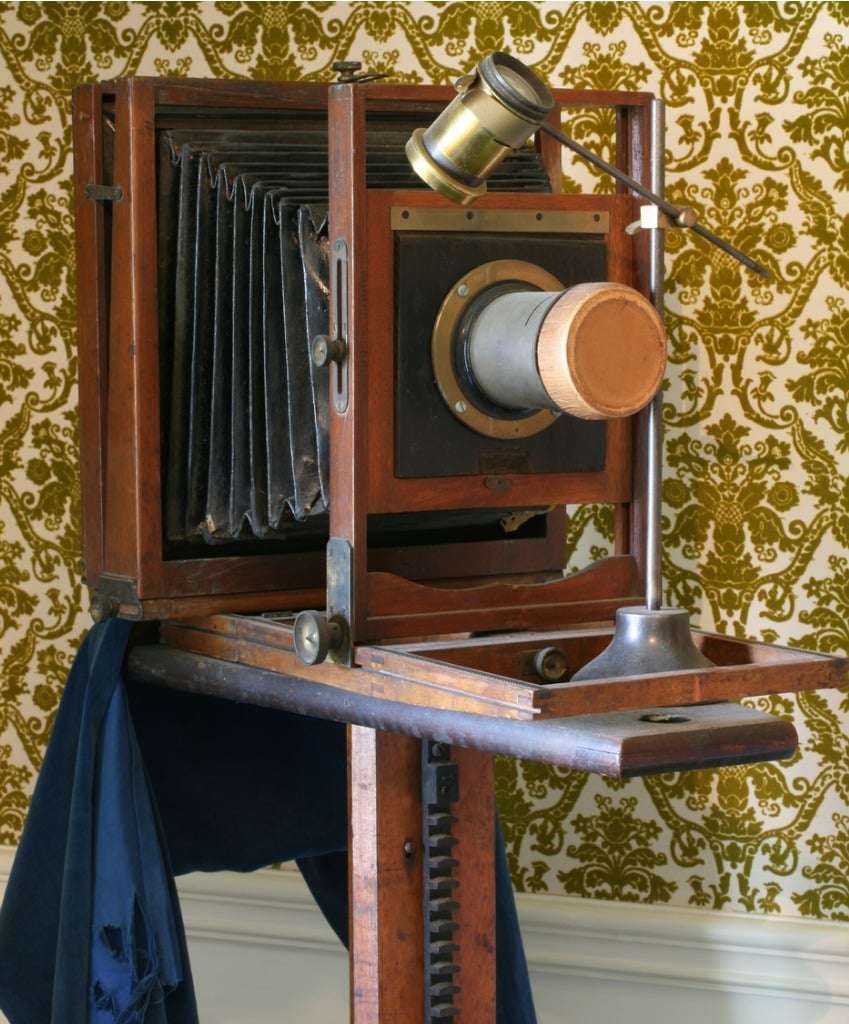
photo by merrymoonmary via iStock
Well, the masses that could afford the time and money involved anyways. Though it may have been one of the easier metal plate photographic processes, it was still messy, expensive, very time consuming, and somewhat dangerous.
Enter the Camera: 1841
Photographers of this era generally used cameras designed and made by themselves or skilled craftsmen, adapting lenses made by optical manufacturers to use photographically.
Early in the camera timeline of the history of photography were optical companies such as Zeiss, Leitz, and others starting to design lenses specifically for photography. Voightlander went a step beyond and introduced a camera for metal plates in 1841.
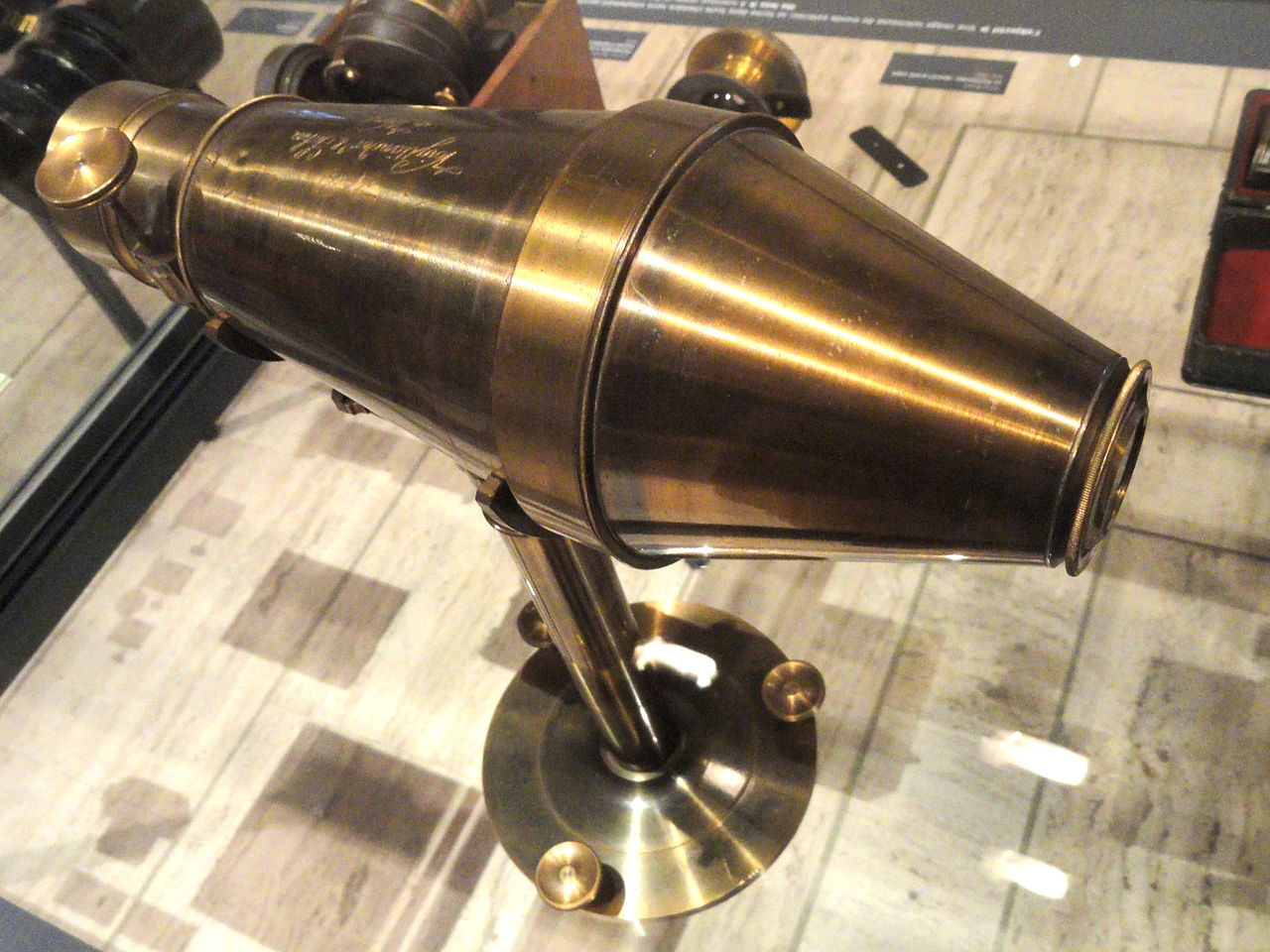
Daderot [Public domain]
Photojournalism: 1848 - 1865
In addition to its scientific uses and all the art produced, photography also made its way into the news. The June Days 1848 workers revolt in France, the Crimean War of 1853 - 1856, and the US Civil War of 1861 - 1865 thrust photographic images of war into the public view.
Written journalistic descriptions and hand-drawn or painted illustrations were replaced by photographic images. These images were displayed in public shows and published in newspapers and magazines.
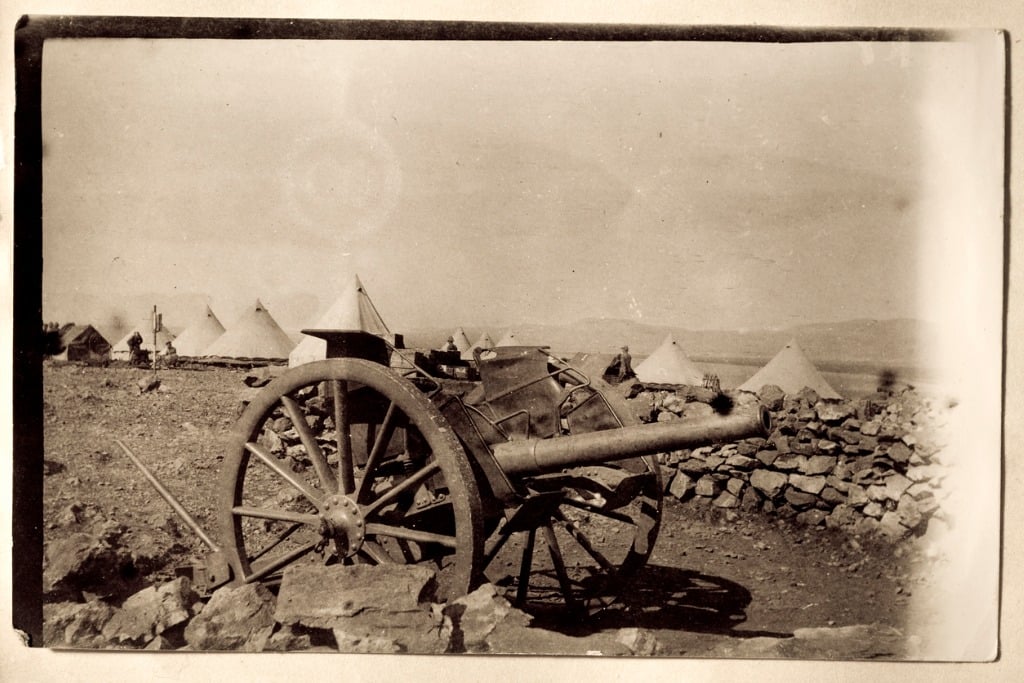
photo by duncan1890 via iStock
In the photography timeline, this helped photography gain a strong place in modern society. Could you even imagine the news now without any photos?
Celluloid Roll Film: 1835 - 1887
Metal and glass plates were fragile, cumbersome and hard to work with, and somewhat costly for the average person. A more accessible method continued to be looked for by photographers.
A combination of two technologies, silver halides and celluloid based emulsions continued getting improved upon.
In 1835, Henry Fox Talbot invented a viable method of spreading a gelatine emulsion on paper. In 1839, astronomer John Herschel came up with a way to fix the image recorded by silver halides.
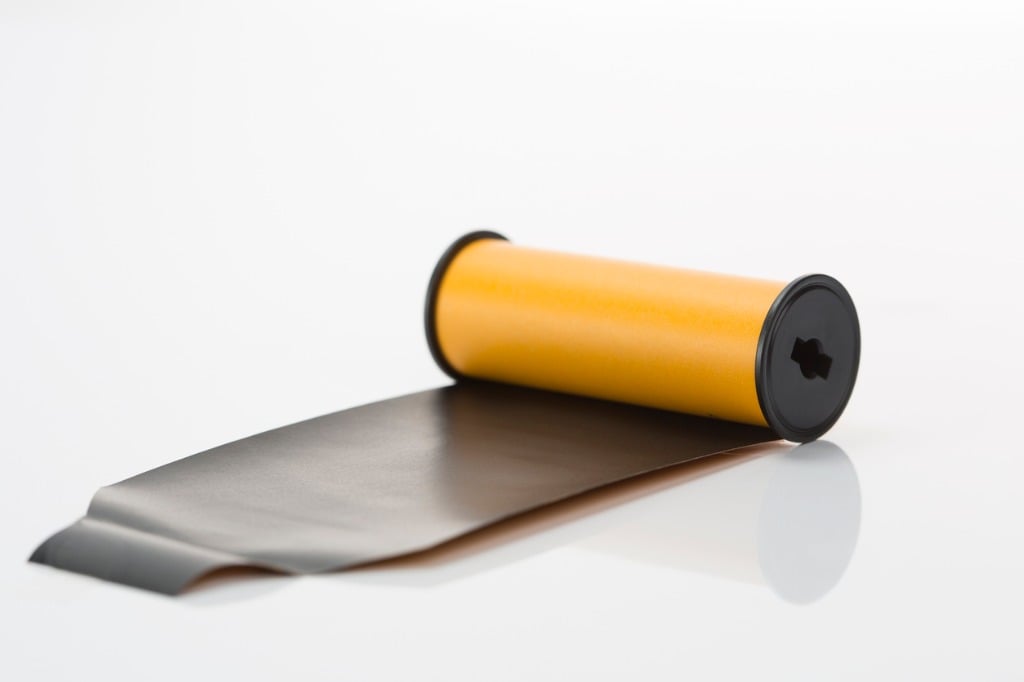
photo by juankphoto via iStock
In 1887, these two technologies were first manufactured together as a photographic film. This film could be produced in individual sheets or as a roll.
KODAK: 1888
George Eastman of Rochester, New York had an idea. Use this new roll film, build a simple, easy-to-use camera, and market it as a fun use product. In the history of photography, Eastman was a master of marketing photography to the masses. “You push the button, we do the rest.”
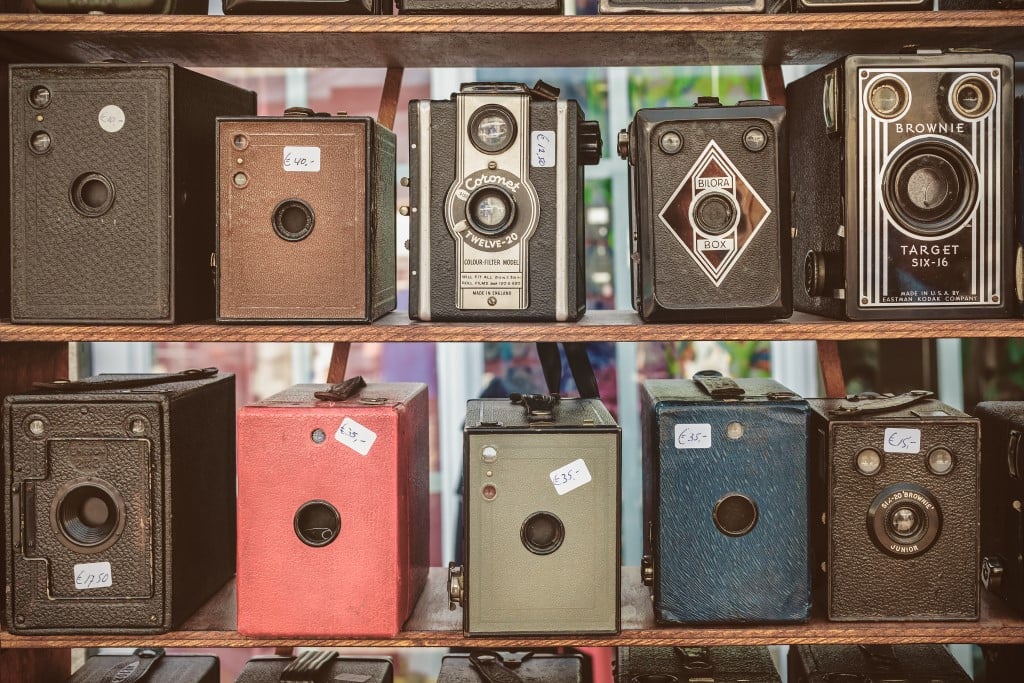
photo by DutchScenery via iStock
Eastman Kodak became a driving force in the worldwide boom of photography. They introduced many different formats of films, both in rolls and sheets, as well as cameras for beginner, enthusiast, and professional photographers.
Moving Pictures: 1878 - 1900
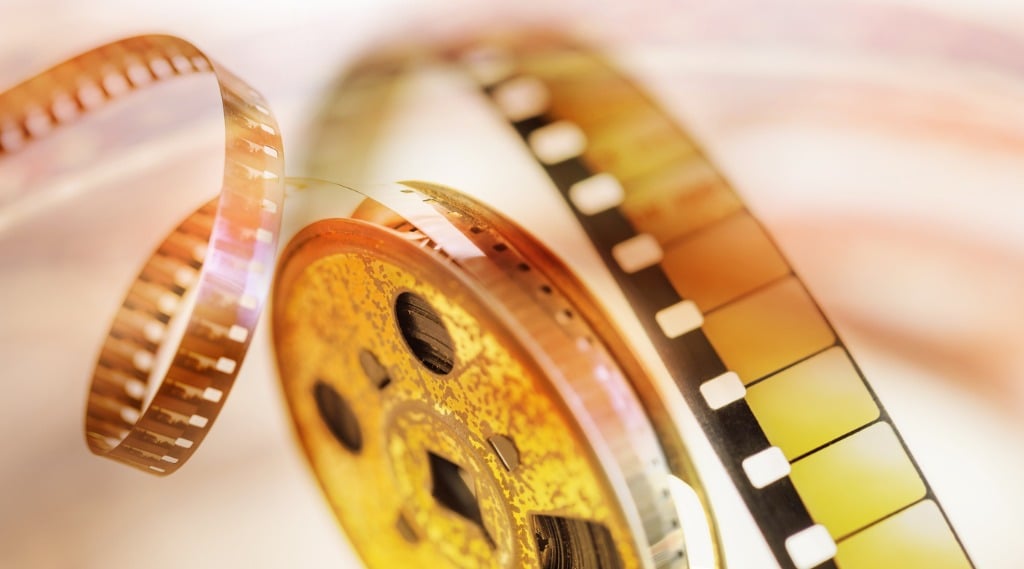
photo by Grafissimo via iStock
Motion pictures, moving pictures, or movies are an entrenched part of the timeline of photography.
The question of how best to capture subjects in motion was first successfully answered by Eadweard Muybridge in response to settling a bet about horses hooves and galloping. The things that move technology!
In short time, cameras and accompanying projects were invented to film continuous motion and display them by means of projecting onto a large screen. Later innovations such as sound recording get added in as well in due course.
35mm Film and the Leica: 1913
One of the more common formats of roll film was 135 format, also called 35mm. This format was used primarily for motion pictures, but it also started getting spooled into small cartridges for miniature still cameras, as they were called then.
The movie cameras transported 35mm film through the cameras vertically, with an image frame of 18x24mm. In 1913, Oskar Barnack, an engineer at Leitz, designed a prototype still camera that transported the film horizontally, producing a 24x36mm image frame.
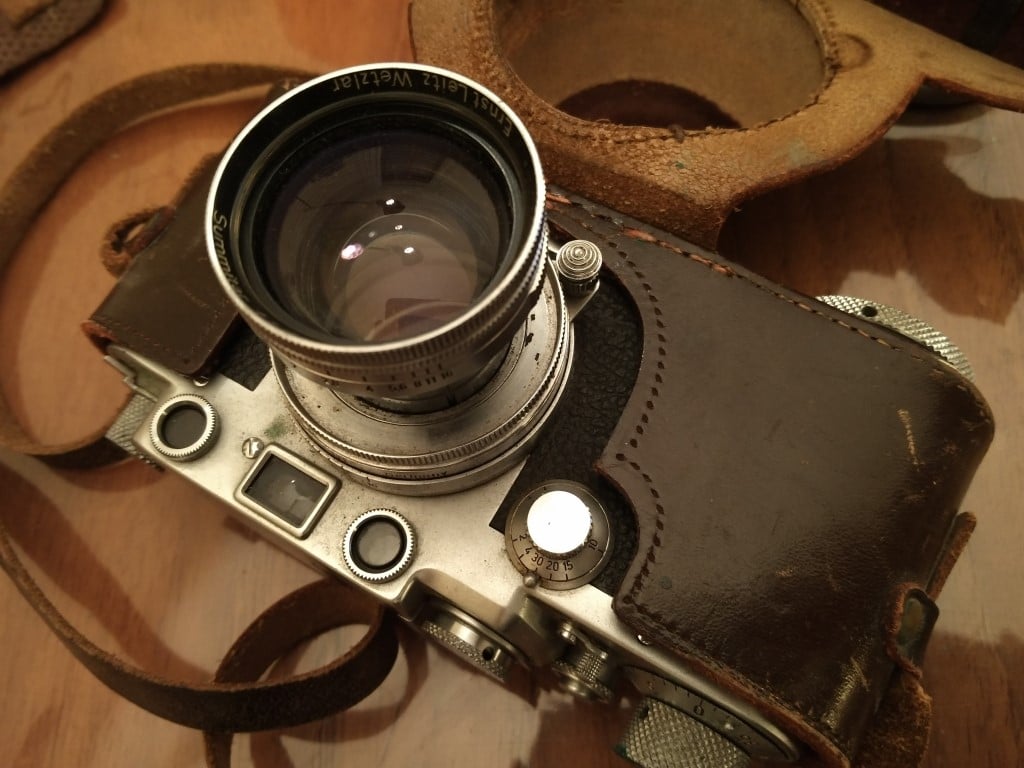
Photo by jacopo marello on Unsplash
By 1925, the Leica I was introduced and became a commercial success. In time, the 24x36mm format became one of the most produced and used image formats in all of photography. This still holds true in digital cameras today.
35mm SLRs: 1957 & 1959
While many film and camera formats exist, 35mm became one of the most popular formats in our history of photography.
In 1957, the first eye-level viewing single-lens reflex camera with an instant return mirror was introduced by Asahi Optical of Japan, called the Pentax.
The year 1959 saw the release of the Nikon F, a professional-caliber 35mm SLR with an entire system of lenses, motor drives, and other accessories surrounding it.
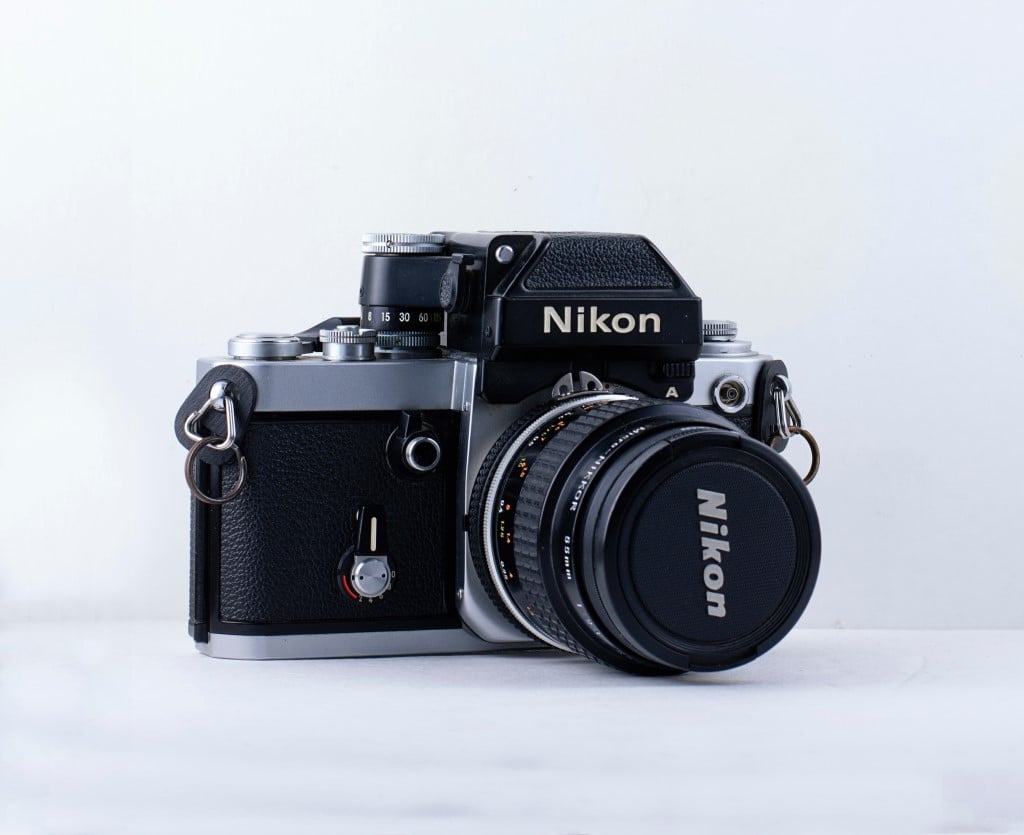
Photo by Jonathan Talbert on Unsplash
35mm SLRs became one of the primary types of cameras for photographic images. Their form factor and image format are still one of the more dominant forces in modern digital photography.
Digital Reigns Supreme: 1975 - Present
The history of photography timeline continues progressing through to the present day with digital imaging taking front stage for most photographers. Digital is a fantastic medium for photography because of all of the varied formats, storage and display options, and ease of transferring images.
The first known digitally recorded images were created in a Kodak lab in 1975 and it took 23 seconds to capture the 0.01 MP image. The camera was very basic but the recording apparatus weighed in at 8 pounds.
Among the first digital cameras of the 1980s and 1990s were several point shoot style cameras from computer makers and the bigger camera manufacturers. From about 1989 through to the early 2000s, Fuji and Kodak collaborated with Canon and Nikon to make digital cameras that fit into what professionals needed.
Nikon then introduced the D1 in 1999. This marked the first time that a major camera manufacturer on its own designed and built a camera specifically as a digital system camera.
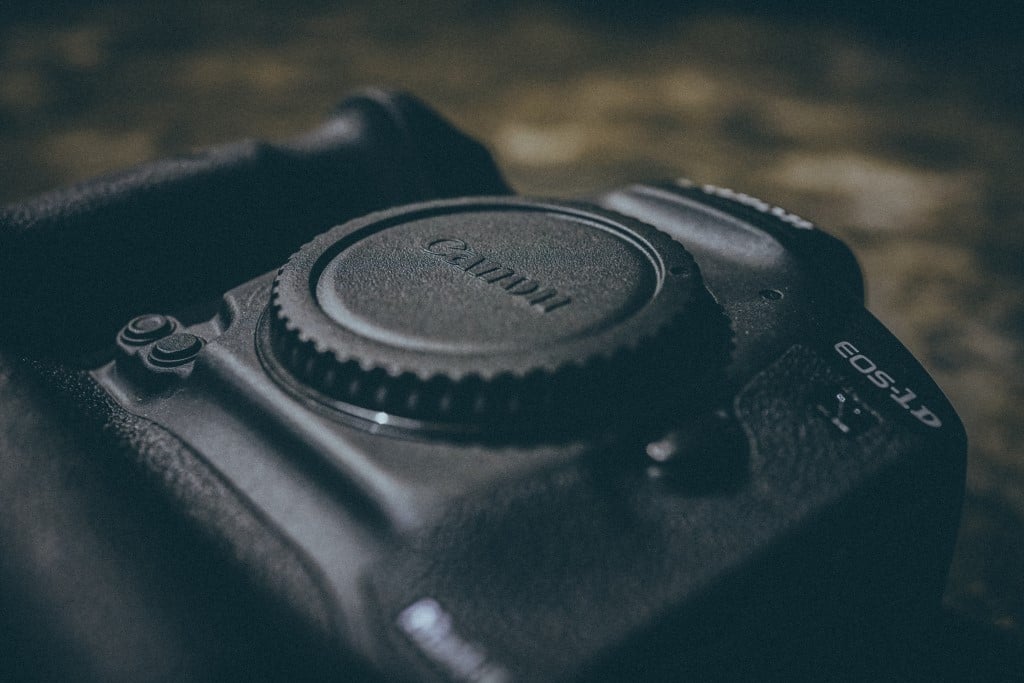
Photo by Chris Yang on Unsplash
By 2004, the sensor in the Canon EOS 1D Mark II had surpassed the resolving power of the former industry standard Kodachrome slide film. Digital was here to stay. DSLRs were pretty much taking over from 35mm SLRs.
History of Photography Timeline Continues: Present Day
Even though a lot of attention is given to 35mm format cameras, film or digital, many other formats exist. We can also look at the introduction of video recording for motion pictures.
One of the most interesting aspects of the timeline of photography is the modern smartphone. Just think, in our pocket we can carry a camera that records still images and video. We can then transfer these photos and movies virtually instantaneously to almost anywhere in the world.
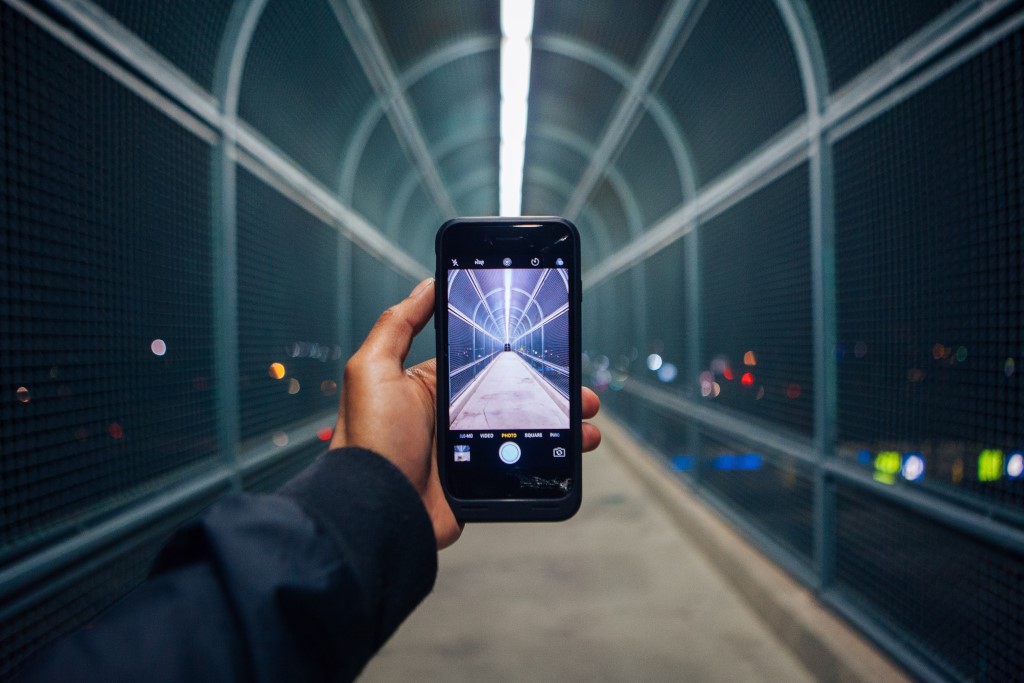
Photo by Omar Prestwich on Unsplash
Compared to the camera obscura or stinky metal plates, we have definitely come a long way.
Really, the subject of a timeline for the history of photography could fill up a rather large book.
Hopefully, this brief synopsis puts you in a mindset to continue to advance yourself as an artist/scientist/craftsperson, also known as a photographer!
This blog was first published on our website here https://www.photographytalk.com/history-of-photography-timeline-from-start-to-present-day